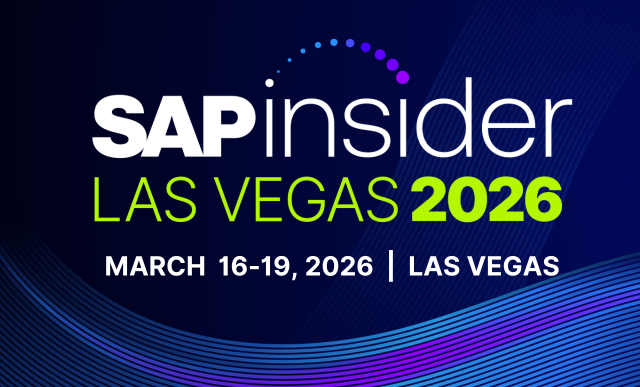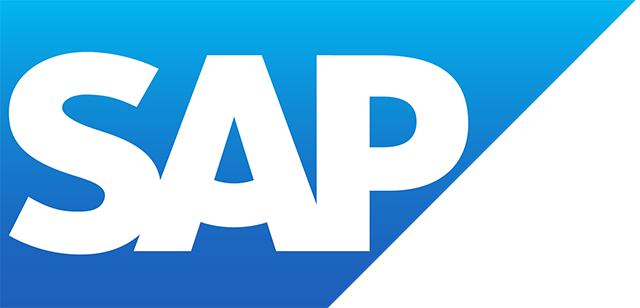SAP Benefits Administration
Filter By
Browse By
- SAP Analytics and AI
- SAP Application Development and Integration
- All SAP Application Development and Integration
- SAP ABAP
- SAP ABAP Development Tools
- SAP ABAP Test Cockpit
- SAP API Management
- SAP BAPI
- SAP Basis
- SAP BRF
- SAP Business Application Studio
- SAP CMS
- SAP Design Studio
- SAP Development Tools
- SAP DevOps
- SAP EAI
- SAP EDI
- SAP Extension Suite
- SAP Fiori
- SAP Fiori Elements
- SAP Integration Suite
- SAP Low Code Application Development
- SAP Low Code Automation
- SAP Netweaver
- SAP Release Management
- SAP UI5
- SAP Web Application Server
- SAP Web IDE
- SAP Business Process Management
- SAP Center of Excellence
- SAP CIO
- SAP Customer Experience
- SAP Data and Data Management
- All SAP Data and Data Management
- SAP BW
- SAP BW/4HANA
- SAP Crystal Reports
- SAP Data Archiving
- SAP Data Center
- SAP Data Governance
- SAP Data Integration
- SAP Data Migration
- SAP Data Quality
- SAP Data Services
- SAP Data Strategy
- SAP Data Visualization
- SAP Data Warehouse Cloud
- SAP DMS
- SAP Document Control
- SAP EIM
- SAP ETL
- SAP ETL Tools
- SAP HANA
- SAP HANA Administration
- SAP HANA Deployment Infrastructure
- SAP HANA Studio
- SAP Master Data
- SAP Master Data Governance
- SAP MDM
- SAP Enterprise Architect
- SAP Enterprise Asset Management
- SAP ERP
- SAP Finance
- All SAP Finance
- SAP Accounting
- SAP AR AP
- SAP Asset Accounting
- SAP Billing Systems
- SAP BPC
- SAP BRIM
- SAP Cash Management
- SAP Central Finance
- SAP Controlling
- SAP COPA
- SAP Cost Center Accounting
- SAP Currency Risk
- SAP e-invoicing
- SAP FICO
- SAP Finance Automation
- SAP Advanced Financial Closing
- SAP Financial Consolidation
- SAP Financial Planning
- SAP FX Risk
- SAP General Ledger
- SAP Global Tax Management
- SAP Hyperion
- SAP Order to Cash
- SAP Payment Processing
- SAP Profitability Analysis
- SAP Rebate Management
- SAP S/4HANA Finance
- SAP SWIFT Compliance
- SAP Treasury Management
- SAP Universal Journal
- SAP Governance Risk and Compliance
- SAP Human Capital Management
- SAP Intelligent Technologies
- SAP Platform and Technology
- All SAP Platform and Technology
- SAP Business Technology Platform
- SAP Cloud
- SAP Cloud Connector
- SAP Cloud Integration Platform
- SAP Cloud Migration
- SAP Cloud Platform
- SAP Cloud Providers
- SAP Cloud Strategy
- SAP Digital Signature
- SAP Container Platform
- SAP HANA Enterprise Cloud
- SAP Digital Asset Management
- SAP Smart Forms
- SAP HEC
- SAP Digital Integration Hub
- SAP Hyperscalers
- SAP Infrastructure
- SAP Messaging
- SAP Quality and Testing
- SAP Security
- SAP Spend Management
- SAP Supply Chain Management
- All SAP Supply Chain Management
- SAP APO
- SAP Asset Management
- SAP Business Network
- SAP Digital Manufacturing Cloud
- SAP Digital Twin
- SAP EWM
- SAP IBP
- SAP Inventory Management
- SAP Label Printing
- SAP Logistics
- SAP Manufacturing
- SAP Manufacturing Automation
- SAP MES
- SAP MII
- SAP MM
- SAP MRO
- SAP MRP
- SAP Order Management
- SAP Plant Maintenance
- SAP PLM
- SAP Production Planning
- SAP S&OP
- SAP SD
- SAP SPM
- SAP Supply Chain Planning
- SAP Track and Trace
- SAP Transportation Management
- SAP System Administration
SAP Benefits Administration: An Overview and Key Considerations
Benefits are a crucial part of overall employee compensation. Companies spend a lot of time figuring out the balance of benefits that ensure they are attractive enough to bring in and retain talent. To ensure the employees can access those benefits, administration is required. This can be a difficult practice if done manually, and many organizations have turned to technology to help streamline the benefit administration process. SAP doesn’t develop its own benefits administration software, but it does sell a Benefitfocus tool under the SAP Benefits Administration branding.
SAP Benefits Administration: An Overview and Key Considerations
Benefits are a crucial part of overall employee compensation. Companies spend a lot of time figuring out the balance of benefits that ensure they are attractive enough to bring in and retain talent. To ensure the employees can access those benefits, administration is required. This can be a difficult practice if done manually, and many organizations have turned to technology to help streamline the benefit administration process. SAP doesn’t develop its own benefits administration software, but it does sell a Benefitfocus tool under the SAP Benefits Administration branding.
Administrating benefits is more crucial in the United States because of the much higher occurrence of employer-provided health insurance vs. other countries. Because of that, many benefits administration tools are designed specifically for organizations in the United States.
Benefits administration solutions will typically help digitize and automate processes and documents for the following benefits:
- Health insurance and related benefits
- Disability and life insurance
- Paid Time Off (Vacation, holidays, service days)
- Leave (Sick/Parental/Bereavement)
- Retirement accounts
- Wellness plans
- Rewards and recognition
There are now benefit administration offerings for enterprises large, medium, and small. Beyond SAP’s branded offering, Human Capital Management (HCM) vendors such as Alight Solutions offer benefit administration solutions that integrate with SAP. Other companies that are focused on SAP SuccessFactors services, such as Rizing, can help companies implement benefit administration tools. There are also companies that provide more specific tools—Phenom offers a platform designed for administering rewards and recognition.
Key Considerations for SAP Benefits Administration
- Employee satisfaction should be a priority for companies that want to retain their top talent. Benefits are a part of that, but so are experiences. Employees don’t want to have to work to use their benefits, and the best companies are focused providing positive employee HR experiences. In our recent HR technology research,the top performing companies were 15% more likely to promote employee satisfaction through better experiences.
- Benefit administration tools typically provide self-service functionality. For example, and employee can request time off and a manager can approve it without any HR intervention. Employee and manager self-service can reduce busywork for HR teams.
- Along with self-service, automation is key to extending the effectiveness of your HR employees. Benefits administration tools can help automate benefit enrollment processes, automate tracking leave balances, and more. This leads to less manual work for HR practitioners, less steps for errors to be made, and easier reporting.
934 results
-

 Premium
Premium
Weigh Your Options for Implementing Overall Authorizations
Reading time: 13 mins
Learn the basic information for building an overall authorizations concept including specifications and examples for each different type of role as well as structural authorizations use. Also, see some examples of bad role design and specific actions to avoid. Key Concept General authorizations (or roles) can be described by the answers to two questions: “What...…
-

 Premium
Premium
Six Steps to Creating Great-Looking PDF Reports in BW
Reading time: 14 mins
Distributing your company’s static reports to end users using the Portable Document Format (PDF) allows you to tap into the flexibility and document management benefits PDF files provide. The author shows you how to create PDF reports using standard BW functionality, which reduces the strain on your system. She also explains how to configure the...…
-

 Premium
Premium
Part 2: Align SAP Time Management with Your Company’s Time Quota Requirements
Reading time: 7 mins
If your company uses negative time quotas to allow employees to exceed their annual leave entitlements, you can use a standard report and infotype 0416 (time quota compensation) to quickly and simply reduce their entitlements for the following year by the amount they have already taken. Key Concept Time quota in SAP ERP HCM refers...…
-
-

 Premium
Premium
Improve Maintenance of Your PA30 Records: Leave a Trace
Reading time: 20 mins
Improve the processing of personnel data maintenance and avoid erroneous data entry by following a step-by-step procedure to configure actions and create a daily activity report that monitors HR data maintenance. Key Concept Infotype 0000 (actions) stores information about the actions the user performs on employee master data. Personnel actions infotype is a header record...…
-

 Premium
Premium
How to Perform Data Provisioning in SAP HANA Studio
Reading time: 11 mins
/HANALearn the steps behind using two methods for data provisioning in SAP HANA: SAP BusinessObjects Data Services and the SAP Landscape Transformation Replication Server. These steps serve as the foundation for the bigger task of deploying your first data model in SAP HANA. Key Concept Data provisioning involves selecting source metadata and importing its metadata...…
-

 Premium
Premium
Streamline Personnel Assets Assigned to Employees and Integrate HR Processes
Reading time: 8 mins
Learn how to align personnel assets assigned to employees and streamline the associated organizational SAP ERP HCM processes. Key Concept Most organizations use manual techniques to assign assets to employees and take assets back from them when they leave the organization. To achieve this tedious task, they maintain a separate system, manual registers, or a...…
-

 Premium
Premium
How to Use Quota Management User Exits for Complex Leave Requests
Reading time: 13 mins
Gain insight into the capabilities of each of the 12 user exits available in the quota management module. Review expert recommendations on how to implement the quota user exits to meet your unique requirements. Key Concept The absence quota configuration is flexible and capable of handling highly sophisticated requirements. When the standard configuration does not...…
-
-

 Premium
Premium
SAP NetWeaver 2004s: New Analysis Authorizations Ease Administration
Reading time: 12 mins
A new transaction in SAP NetWeaver 2004s eases the task of creating and optionally assigning reporting authorizations to users. Get expert advice about using transaction RSECADMIN. Key Concept SAP BI manages two different categories of authorizations. One is warehouse level and the other is analysis authorizations (previously called reporting authorizations). Analysis authorizations focus on what...…
-

- SAP Finance
 Premium
Premium
Configuring Time Quota Compensation in SAP ERP HCM
Reading time: 12 mins
Gain a fundamental understanding of how employee absence quotas are paid to employees using standard SAP Time Management configuration and integration with SAP payroll. Compare two different compensation methods—quota-specific compensation and free compensation—to see an overview of the considerations that need to be taken into account when implementing this solution. Walk through the process of...…
-

- SAP BusinessObjects
 Premium
Premium
Part 1: An Introduction to Security Implementations in the SAP BusinessObjects BI Platform
Reading time: 20 mins
Gain an overview of the enterprise security model in the SAP BusinessObjects BI platform. Learn the main differences between the three different types of security-access levels (e.g., object-level, application-level, and data-level) and discover the right case or business scenario in which to use each security-access level. Finally, learn how to create and use a security...…
Become a Member
Unlimited access to thousands of resources for SAP-specific expertise that can only be found here.
Become a Partner
Access exclusive SAP insights, expert marketing strategies, and high-value services including research reports, webinars, and buyers' guides, all designed to boost your campaign ROI by up to 50% within the SAP ecosystem.
Upcoming Events
Related Vendors
Your request has been successfully sent


